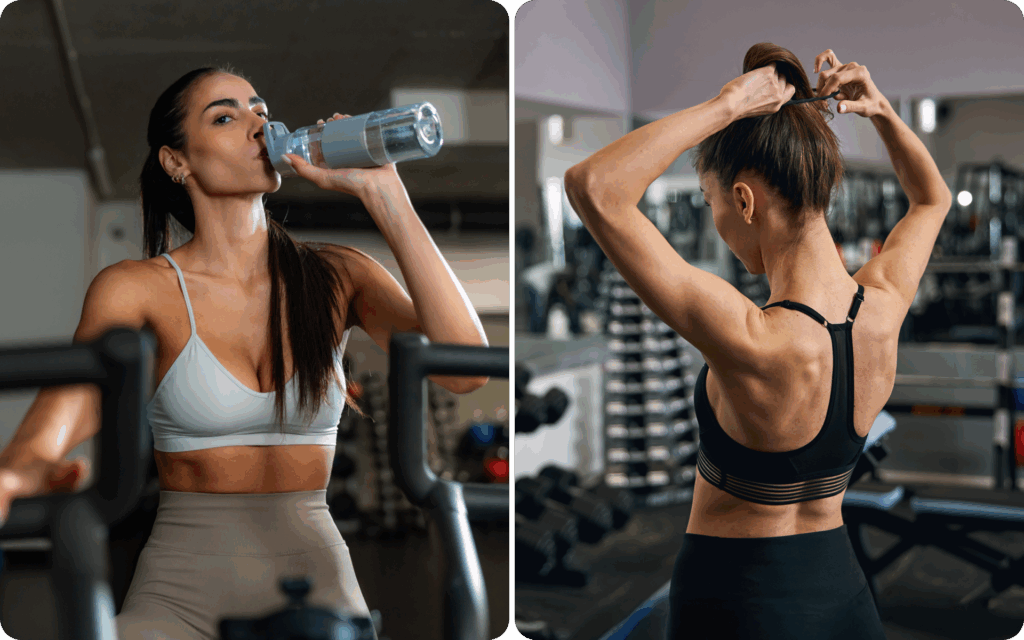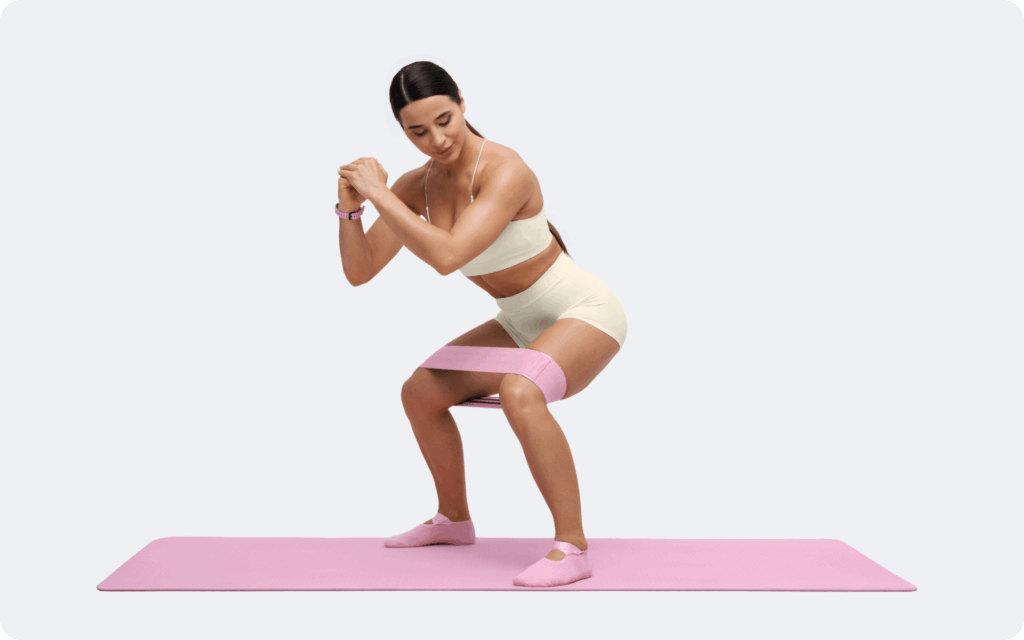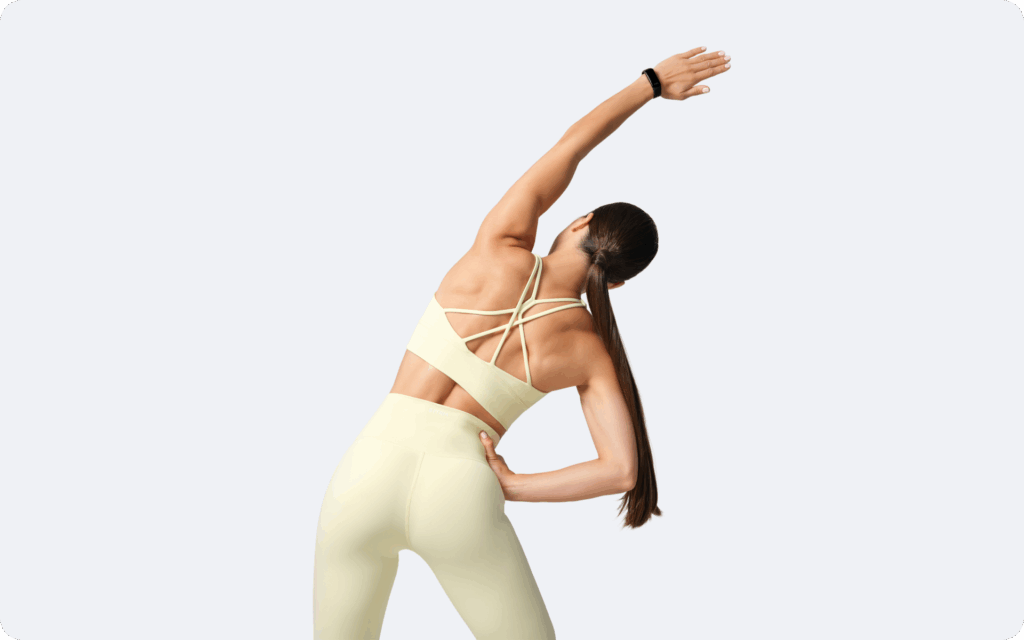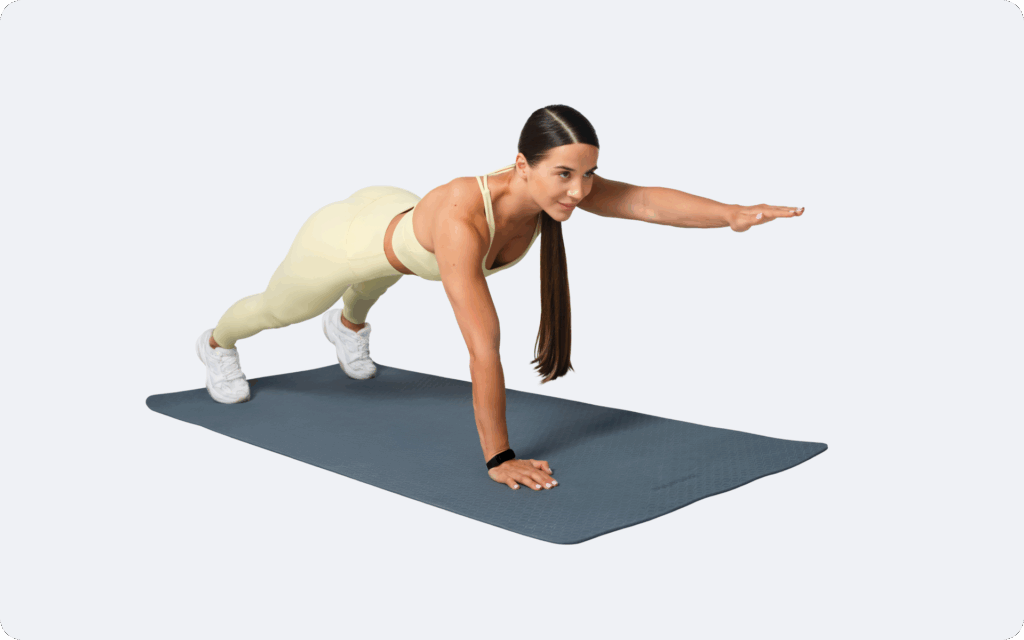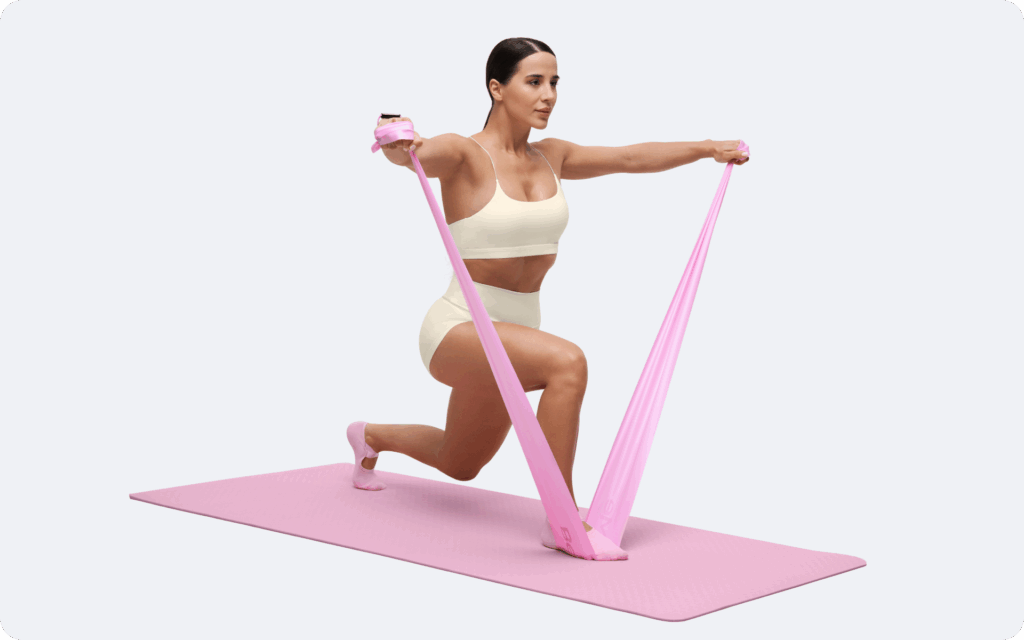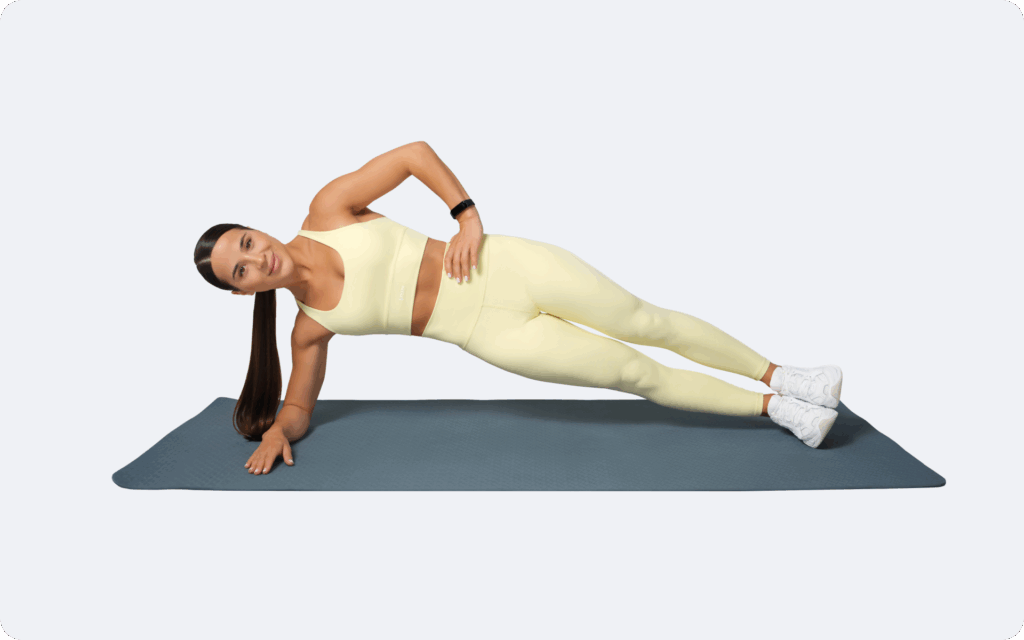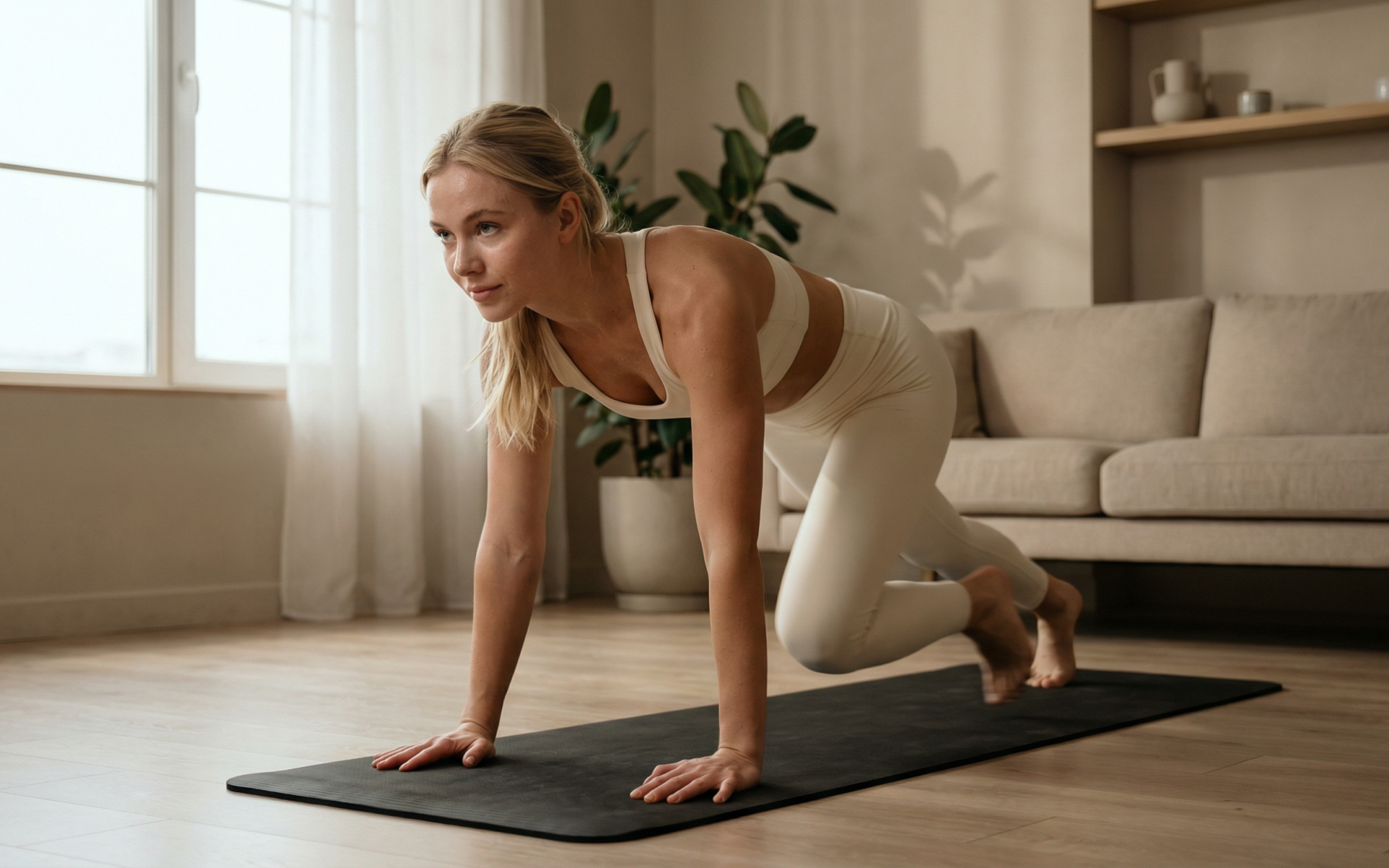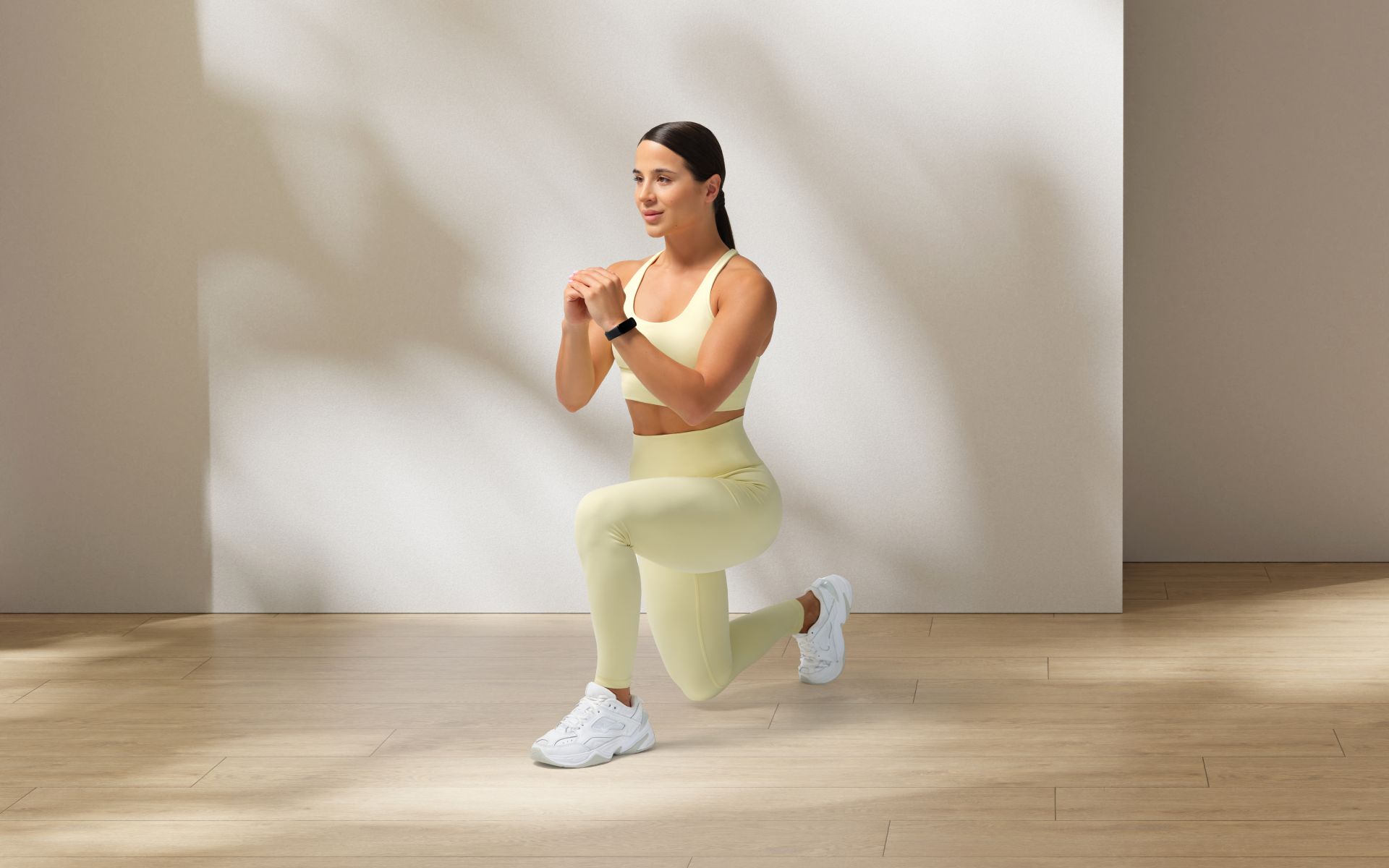Building muscle doesn’t have to be complicated, but it does require smart programming. While most lifters default to traditional body part splits, a well-designed 4-day full-body workout routine can deliver superior results for muscle growth and strength gains.
This comprehensive approach trains every major muscle group four times per week, dramatically increasing your training frequency compared to typical “bro splits”. The key lies in strategic emphasis shifts that allow you to train hard while managing fatigue effectively.
Whether you’re looking to break through a plateau or maximize your time in the gym, this evidence-based program will transform how you think about hypertrophy training.
Can You Do a 4-Day Full-Body Workout?
Yes, you can absolutely do a 4-day full-body workout, but it’s best suited for intermediate lifters, not complete beginners. While a typical full-body routine involves three non-consecutive days (such as Monday, Wednesday, and Friday), a 4-day plan requires the careful management of volume, intensity, and recovery.
The main challenge is avoiding overtraining. If you push every muscle group to its limit four times a week, your recovery capacity will quickly diminish. The key is to vary the intensity and focus of each session. This allows you to provide enough stimulus for growth while giving your joints and muscles adequate time to repair (1).
For beginners, the rapid progress known as “newbie gains” means you can achieve significant results with less work. A 3-day full-body plan is often more effective and safer in the first few months. It provides enough frequency for the nervous system and muscles to adapt without overwhelming them (1).
Is a 4-Day Full-Body Workout Routine Effective?
When it’s structured correctly, a 4-day workout routine for muscle gain is highly effective. Training a muscle group more frequently is a known driver of hypertrophy. By hitting each muscle four times a week, you create more opportunities for growth than with a traditional body-part split.
Here are some key benefits:
- Increased Training Frequency: Stimulating muscles more often can accelerate growth, as long as you can recover between sessions (2).
- Improved Motor Learning: Practicing major lifts such as squats and presses multiple times a week improves your technique and allows you to lift heavier and more safely over time (3).
- Better Stimulus Distribution: Instead of crushing a muscle group once a week, you provide a consistent, moderate stimulus that supports continuous growth (1).
- Enhanced Calorie Burn: Full-body workouts are metabolically demanding (4), which makes this an effective 4-day workout routine for weight loss and muscle gain.
The secret is to use shifting emphasis. Each of the four workouts will train the full body, but with a different focus – such as strength on one day and hypertrophy on another. This approach manages fatigue and keeps your performance high on the most important exercises.
Read more: The Superset Workout Plan: Why Everyone’s Talking About It and Whether It’s Right for You
How to Structure a 4-Day Full-Body Workout
Structuring a 4-day full-body workout for muscle gain where each day trains the full body, but with a shifting emphasis on movement patterns, is one way to approach the increased training frequency.
Why use shifting emphasis across 4 full-body days?
- Quality over quantity each session: If you try to push every pattern hard every day, performance on later exercises tanks due to local fatigue. Emphasis days let you go hard on a few priority movements while keeping the rest as supportive volume.
- Balanced weekly stimulus: Across four days, you still cover all major patterns and muscle groups with sufficient weekly sets, but you spread the “hard sets” so joints and connective tissues can recover.
- Motor learning and strength: Repeating key patterns 2–3x/week with varied intensities/rep ranges (strength, hypertrophy, metabolic) improves technique and strength without grinding the same pattern to exhaustion daily (3).
- Fatigue management: Rotating emphases (e.g. heavy squat day 1, hinge day 3, hypertrophy lower day 4) reduces overlapping soreness and lets you maintain higher-quality outputs across the week (4).
- Joint and tendon health: Variation in exercise selection, loading zones, and emphasis mitigates overuse while keeping total weekly volume effective (4).
Why not hit all movement patterns maximally during each session? You can, but outputs drop as the session goes on, which can reduce effective volume. Not to mention the overlapping soreness and exhaustion that may happen.
BetterMe: Health Coaching app helps you achieve your body goals with ease and efficiency by helping to choose proper meal plans and effective workouts. Start using our app and you will see good results in a short time.
What Body Parts to Work on What Days 4 Days a Week
With a full-body routine, you’ll work all major muscle groups in every session. Instead of assigning body parts to specific days, a more effective method is to organize your workouts around foundational movement patterns. This will ensure you build a balanced and functional physique.
The primary movement patterns are:
- Lower-Body Push (Squat): Exercises such as back squats, front squats, and goblet squats.
- Lower-Body Pull (Hip Hinge): Movements such as deadlifts, Romanian deadlifts, and hip thrusts.
- Upper-Body Horizontal Press: Bench presses, dumbbell presses, and push-ups.
- Upper-Body Horizontal Pull: Barbell rows, dumbbell rows, and cable rows.
- Upper-Body Vertical Press: Overhead presses and dumbbell shoulder presses.
- Upper-Body Vertical Pull: Pull-ups and lat pulldowns.
Each of your four weekly workouts should include an exercise from most of these categories. This is how you achieve a 4-day workout split where each muscle is hit twice a week, and in this case, even more.
What Is a Beginner-Friendly 4-Day Full-Body Workout Routine?
It’s not wise for a complete beginner to do a 4-day full-body workout for many reasons, the main one being that it’s simply not necessary. Thanks to “newbie gains”, they can achieve a lot with much less work. These are the rapid strength and muscle improvements that most people experience during their first few months of consistent resistance training (6).
In the first 8-12 weeks, a simple 3-day full-body plan delivers rapid progress because nervous-system adaptations, quick technique improvements, and early hypertrophy respond best to moderate volume, consistent practice, and adequate recovery (4). This setup reduces fatigue, shortens sessions, and keeps your form sharp while still providing enough frequency to grow.
Move to 4 days later if you want shorter sessions, more practice, or you’re recovering easily, but early on, less done well beats more done tired.
Read more: 4-Days-a-Week Workout Plan: Your No-Nonsense Guide to Getting Fit Without Burning Out
4-Day Full-Body Workout Plan for Intermediates
This evidence-based, four-day-a-week program is designed for intermediate trainees to build strength and muscle mass efficiently. By training the full body in each session with varying emphasis, you increase training frequency per muscle group, a key driver of muscle growth.
The focus of this workout plan is on:
- Smarter stimulus distribution
- Better performance on key lifts
- Managing local fatigue despite hitting each muscle 4 times a week
Whether you’re a workout beast or just a beginner making your first foray into the world of fitness and dieting – BetterMe has a lot to offer to both newbies and experts! Install the app and experience the versatility first-hand!
Weekly Schedule
- Monday: Day 1 – Full-body strength focus
- Tuesday: Day 2 – Upper-body hypertrophy focus
- Wednesday: Rest or active recovery
- Thursday: Day 3 – Full-body hinge/strength focus
- Friday: Day 4 – Lower-body hypertrophy and upper pump
- Saturday and Sunday: Rest or active recovery
Each day includes:
- A squat or unilateral knee-dominant movement
- A hip hinge (RDL or deadlift variant)
- A horizontal press and/or vertical press
- A horizontal pull and/or vertical pull
- Accessories for delts/arms/calves/core
Daily Warm-Up Protocol
Perform this routine before every workout.
- General Warm-Up (5-7 minutes)
Get your heart rate up and blood flowing to the muscles.
- Cardio: 5 minutes on a stationary bike, rower, or incline treadmill.
- Dynamic Stretches:
- Leg swings (forward and side-to-side): 10 reps each leg
- Arm circles (forward and backward): 10 reps each direction
- Torso twists: 10 reps each side
- Movement-Specific Warm-Up (5 minutes)
Prepare for the day’s main exercises. Perform 1-2 light sets of the first exercise, starting with just the bar and adding minimal weight.
- Example for Day 1 (Squat Focus):
- Goblet squats: 1 set of 10 reps with a light dumbbell
- Band pull-aparts: 1 set of 15 reps
- Push-ups or incline push-ups: 1 set of 5-8 reps
The Workouts
Day 1: Full-Body Strength Focus
| Exercise | Sets | Reps | Rest | RIR | Coaching cues and substitutions |
|---|---|---|---|---|---|
| Back squat | 3 | 3-5 | 3-4 min | 2 | Keep your chest up and drive your knees out. Substitute with goblet squat if form is a priority. |
| Bench press | 3 | 5-8 | 2-3 min | 2 | Pin your shoulders back and drive your feet into the floor. Substitution: dumbbell bench press. |
| Weighted pull-up | 3 | 5-8 | 2-3 min | 1-2 | Drive your elbows down and back. Substitution: lat pulldown or assisted pull-up machine. |
| Romanian deadlift (RDL) | 3 | 8-10 | 2 min | 2 | Hinge at the hips with a slight knee bend. Substitution: dumbbell RDL or good mornings. |
| Seated cable row | 3 | 8-12 | 90 sec | 1 | Squeeze your shoulder blades together. Substitution: dumbbell row. |
| Lateral raise | 3 | 12-15 | 60 sec | 1 | Lead with your elbows, avoid shrugging. |
| Hanging leg raise | 3 | 10-15 | 60 sec | 1 | Control the negative - don't swing. Substitution: captain's chair leg raise or lying leg raise. |
Day 2: Upper-Body Hypertrophy Focus
| Exercise | Sets | Reps | Rest | RIR | Coaching cues and substitutions |
|---|---|---|---|---|---|
| Incline dumbbell press | 3 | 8-12 | 2 min | 1 | Keep a slight arch in your lower back. Substitution: incline barbell press or Smith machine. |
| Chest-supported row | 3 | 10-15 | 90 sec | 1 | Focus on pulling with your back, not your arms. Substitution: T-bar row or bent-over dumbbell row. |
| Leg press | 3 | 10-15 | 2 min | 2 | Keep your feet flat and control the descent. Substitution: hack squat or a lighter-weight squat variation. |
| Seated dumbbell shoulder press | 3 | 8-12 | 2 min | 1 | Keep your core braced and press directly overhead. Substitution: machine shoulder press. |
| Cable fly | 2 | 12-15 | 60 sec | 0-1 | Squeeze your chest at the peak contraction. Substitution: pec deck machine. |
| Triceps pushdown | 3 | 12-15 | 60 sec | 1 | Keep your elbows pinned to your sides. |
| Biceps curl (dumbbell or cable) | 3 | 12-15 | 60 sec | 1 | Control the eccentric (lowering) phase. |
| Calf raise (seated or standing) | 4 | 15-20 | 45 sec | 0-1 | Pause at the top and get a full stretch at the bottom. |
Day 3: Full-Body Hinge/Strength Focus
| Exercise | Sets | Reps | Rest | RIR | Coaching cues and substitutions |
|---|---|---|---|---|---|
| Deadlift (conventional or trap-bar) | 3 | 3-5 | 3-5 min | 2 | Maintain a flat back and drive with your legs. Substitution: heavy rack pulls. |
| Overhead press (standing) | 3 | 5-8 | 2- 3 min | 2 | Squeeze your glutes and brace your core. Substitution: seated barbell or dumbbell press. |
| Chin-up | 3 | 6-10 | 2 min | 1-2 | Keep your palms facing you. Substitution: lat pulldown with underhand grip. |
| Bulgarian split squat | 3 | 8-12 | 90 sec/leg | 1 | Keep your torso upright. Substitution: lunges or single-leg press. |
| Single-arm dumbbell row | 2 | 8-12 | 90 sec/arm | 1 | Pull the dumbbell toward your hip, not your chest. |
| Face pull | 3 | 15-20 | 60 sec | 1 | Pull toward your face and focus on external rotation. |
| Plank | 3 | 45-60 sec | 60 sec | Maintain a straight line from your head to your heels. |
Day 4: Lower-Body Hypertrophy and Upper Pump
| Exercise | Sets | Reps | Rest | RIR | Coaching cues and substitutions |
|---|---|---|---|---|---|
| Front squat | 3 | 8-10 | 2-3 min | 2 | Keep your elbows high and your torso upright. Substitution: goblet squat or safety bar squat. |
| Barbell hip thrust | 3 | 10-15 | 2 min | 1 | Drive through your heels and squeeze your glutes hard at the top. Substitution: glute bridge or cable pull-through. |
| Leg extension | 3 | 15-20 | 60 sec | 0-1 | Squeeze your quads at the top and control the negative. |
| Lying hamstring curl | 3 | 15-20 | 60 sec | 0-1 | Focus on pulling with your hamstrings, not your lower back. |
| Push-ups | 3 | To Failure | 90 sec | Keep your body in a straight line. | |
| Lateral raise | 3 | 15-20 | 60 sec | 0-1 | Use a lighter weight for a metabolic burn. |
| Bicep curl / tricep extension (superset) | 3 | 12-15 each | 90 sec | 0-1 | Perform one set of curls, then one set of extensions, then rest. |
Progression and Deloads
- Progression: Use the double progression method.
- Select a weight you can lift within the target rep range.
- Each week, try to add more reps to each set until you reach the top of the rep range for all sets.
- Once you hit the top of the rep range (e.g. 3 sets of 8 on bench press), increase the weight by a small amount (2.5-5 lbs) in the next session. Your reps will drop back down, and you’ll work your way up again.
- Deload Week: Every 4-6 weeks, take a deload to promote recovery and prevent burnout. Reduce your working weights by 40-50% or reduce your total sets by half. Don’t train to failure during a deload.
Conditioning and Recovery
- Conditioning: Add 2 sessions of low-to-moderate intensity conditioning per week for 20-30 minutes. Perform these on rest days or after your lifting sessions.
- Options: Incline walking, stationary bike, elliptical, or rowing.
- Nutrition: Support your training by focusing on adequate nutrition. Aim for 0.7-1.0 grams of protein per pound of body weight to help with muscle repair and growth. Stay hydrated and consume a balanced diet of whole foods.
- Sleep: Prioritize 7-9 hours of quality sleep per night. This is when your body recovers and muscles grow.
Those who are looking to complement this program may benefit from a 4-day workout routine for weight loss during cutting phases.
How to Avoid Overtraining on a 4-Day Split
Overtraining becomes a real concern when the training frequency increases without proper attention to recovery variables. Here are the essential strategies to maintain progress while avoiding burnout:
Manage Training Intensity: Not every set needs to be taken to failure. Using a reps in reserve (RIR) system helps you train hard while leaving something in the tank for recovery (7).
Rotate Training Emphasis: Focus on 2-3 priority movements per session while treating others as supportive volume. This prevents the performance decline that occurs when you try to maximize everything simultaneously.
Prioritize Sleep Quality: Aim for 7-9 hours of quality sleep nightly. This non-negotiable recovery period is when your body repairs muscle tissue and consolidates strength adaptations (8).
Monitor Weekly Volume: Track your total weekly sets per muscle group. Most intermediate trainees respond well to 10-20 sets per muscle group weekly, distributed across the four training days (1).
Schedule Deload Weeks: Every 4-6 weeks, reduce the training intensity by 40-50% or cut the total volume in half. This planned recovery period prevents accumulated fatigue and maintains long-term progress (9).
Support with Proper Nutrition: Consume 0.7-1.0 grams of protein per pound of body weight daily, stay hydrated, and fuel your training with adequate carbohydrates (10).
For those who are looking for additional variety, consider full-body resistance band workouts on your rest days for active recovery.
Frequently Asked Questions
Is there a single exercise that works the whole body?
No single exercise effectively works the entire body for building balanced muscle. However, compound movements such as deadlifts, squats, and clean-and-jerks are highly efficient as they engage multiple large muscle groups simultaneously. A balanced routine will always include a variety of movements.
Is it better to work out 4 days in a row or every other day?
For a 4-day full-body split, it’s generally better to insert a rest day after two consecutive training days (e.g. train Monday and Tuesday, rest Wednesday, train Thursday and Friday). This structure helps manage fatigue and ensures you perform better in the second half of the week. Working out four days in a row is possible, but recovery can become a serious issue.
What equipment is needed for a full-body workout?
This program is built around standard gym equipment: a barbell, weight plates, dumbbells, a squat rack, a bench, and various cable machines. However, a 4-day full-body workout for beginners or those with limited equipment can be adapted using resistance bands, kettlebells, and bodyweight exercises.
How can you tell if you’ve overtrained?
Signs of overtraining include persistent muscle soreness that doesn’t go away, a decline in your workout performance, chronic fatigue, irritability, and trouble sleeping. If you experience these symptoms, it’s a good idea to take a deload week or a few extra rest days.
The Bottom Line
This 4-day workout split for hypertrophy offers a balanced and effective way to build muscle and strength. By training your full body with varying intensity, you’ll provide a consistent stimulus for growth while managing recovery. Remember to listen to your body, prioritize nutrition and sleep, and remain consistent.
Are you ready to take your fitness to the next level? Our 30-day full-body challenge is a great way to jumpstart your progress.
DISCLAIMER:
This article is intended for general informational purposes only and does not serve to address individual circumstances. It is not a substitute for professional advice or help and should not be relied on for making any kind of decision-making. Any action taken as a direct or indirect result of the information in this article is entirely at your own risk and is your sole responsibility.
BetterMe, its content staff, and its medical advisors accept no responsibility for inaccuracies, errors, misstatements, inconsistencies, or omissions and specifically disclaim any liability, loss or risk, personal, professional or otherwise, which may be incurred as a consequence, directly or indirectly, of the use and/or application of any content.
You should always seek the advice of your physician or other qualified health provider with any questions you may have regarding a medical condition or your specific situation. Never disregard professional medical advice or delay seeking it because of BetterMe content. If you suspect or think you may have a medical emergency, call your doctor.
SOURCES:
- Effects of Resistance Training Frequency on Measures of Muscle Hypertrophy: A Systematic Review and Meta-Analysis (2016, link.springer.com)
- Effects of Resistance Training Frequency on Measures of Muscle Hypertrophy: A Systematic Review and Meta-Analysis (2016, pubmed.ncbi.nlm.nih.gov)
- Comparison of Weightlifting, Traditional Resistance Training and Plyometrics on Strength, Power and Speed: A Systematic Review with Meta-Analysis (2022, link.springer.com)
- 5 Benefits of Compound Exercises (2016, acefitness.org)
- Diversity in Training and Why It Matters: Five Good Reasons (n.d., strathconaphysicaltherapy.com)
- Neuromuscular adaptations to resistance training in elite versus recreational athletes (2025, frontiersin.org)
- Effect of the Repetitions-In-Reserve Resistance Training Strategy on Bench Press Performance, Perceived Effort, and Recovery in Trained Men (2022, pubmed.ncbi.nlm.nih.gov)
- Unlock the benefits: Why rest, recovery and sleep matter more than you think (2025, hw.qld.gov.au)
- Integrating Deloading into Strength and Physique Sports Training Programmes: An International Delphi Consensus Approach (2023, sportsmedicine-open.springeropen.com)
- Editorial: Nutritional Strategies to Promote Muscle Mass and Function Across the Health Span (2020, frontiersin.org)


